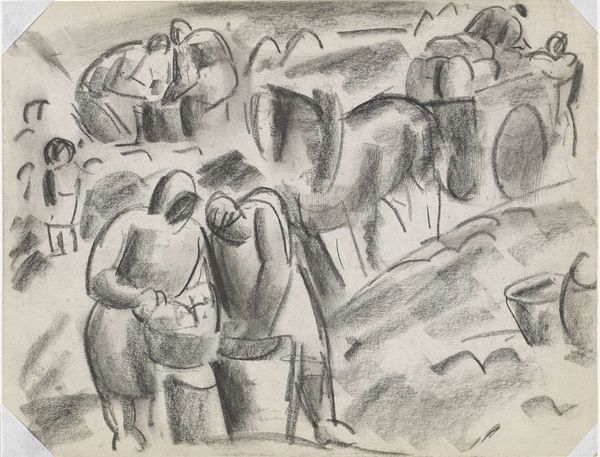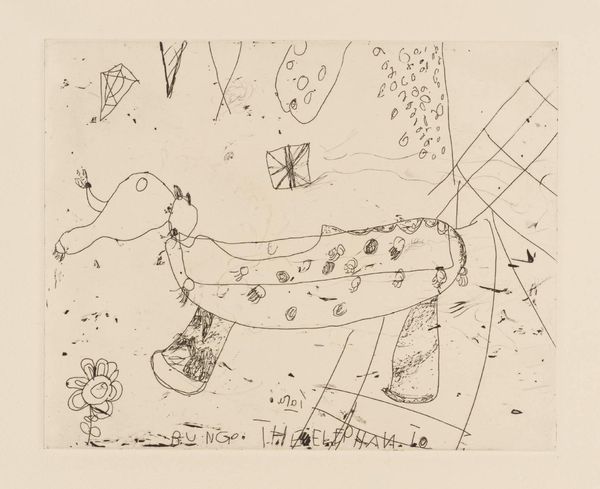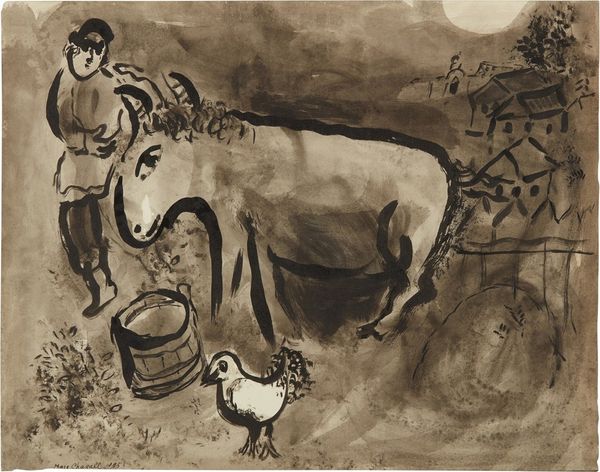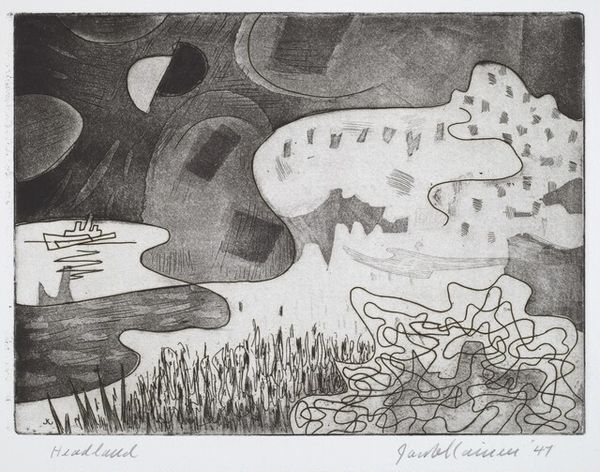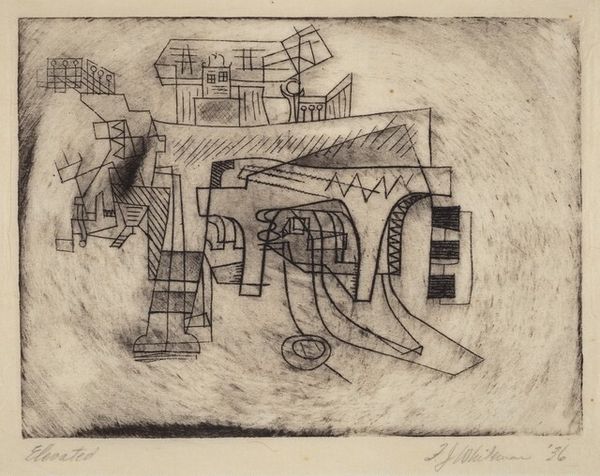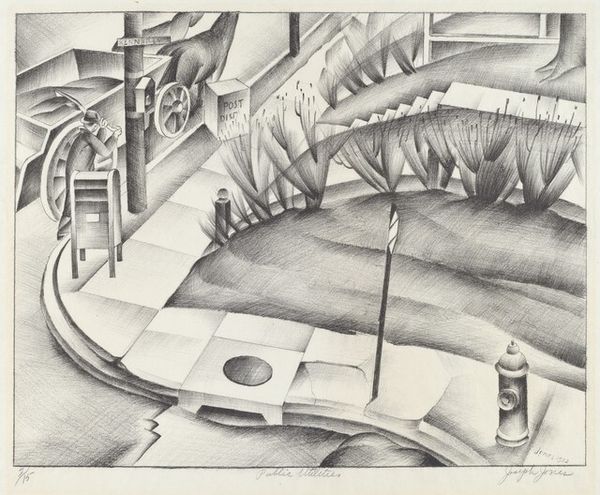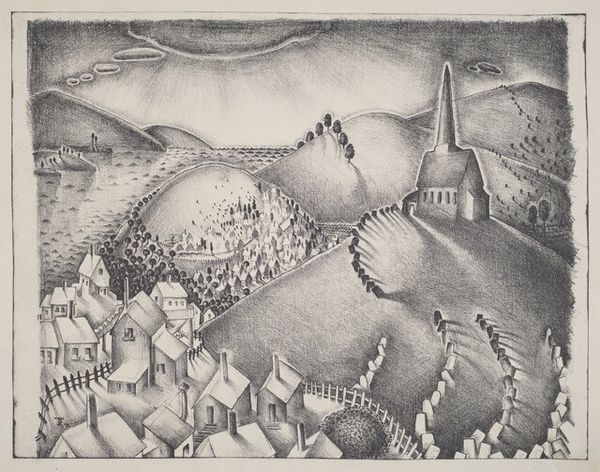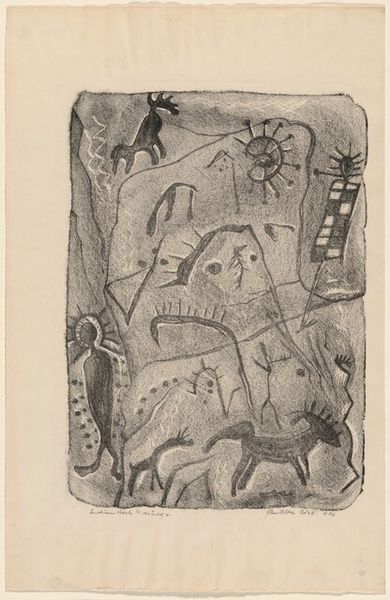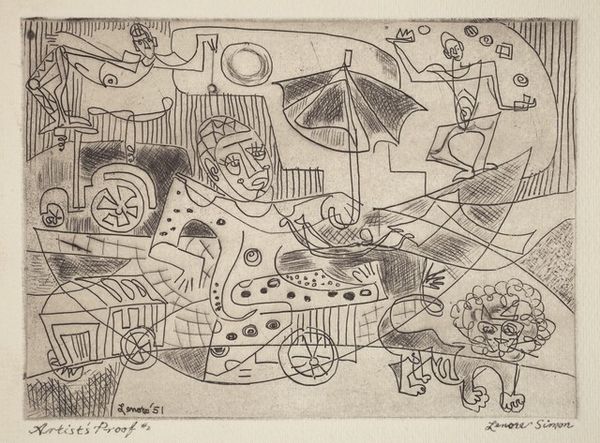
drawing, print, pencil
#
art-deco
#
drawing
# print
#
landscape
#
figuration
#
pencil
#
line
Copyright: National Gallery of Art: CC0 1.0
Curator: Allow me to introduce you to "Holidays", a 1925 work by Beatrice Wood. It appears to be a print, possibly employing pencil for its linework. The image depicts a landscape featuring figures, animals, and a curious car seemingly navigating a stylized countryside. Editor: My initial impression? Endearing melancholy. There's something deeply poignant about the simplicity of the lines, almost childlike, yet they depict a scene with a disquieting undercurrent. The telephone lines feel like constraints rather than connections. Curator: I see your point about the "constraints." In art deco, these streamlined geometric elements, such as the lines and the angular architecture, symbolize modernity and progress. They speak to humanity's attempt to order and control nature, to create "connections" amidst a vast landscape, whether literally or metaphorically. Editor: Right, and those connections appear precarious! I'm especially drawn to the two figures in the car, seemingly a couple. They’re almost expressionless, yet I sense a weariness, as though they are bound by a ritual – this annual "holiday". Even the horses on the hilltop seem to exist more as ornaments, devoid of any sense of movement. Curator: You’ve touched on something significant. The composition echoes visual languages of the past, specifically icons and early modernist styles. It uses graphic means, as if simplifying memories or aspirations. Think of how saints are posed frontally in icons – Beatrice Wood places this couple similarly in a kind of mobile altar. Editor: A mobile altar to disillusionment! The electric pylon juxtaposed with grazing horses really drives that home. Progress versus nature, right? What resonates most is the human condition in this stylized landscape. Are we progressing, or are we all just driving around in circles, following power lines like lemmings? Curator: It could certainly be interpreted that way. However, look closer – the flowers are blooming and suggest the regenerative powers of nature. While Wood shows the somewhat awkward relationship between man and progress, it is not purely a dystopia. The cyclical nature of these vacations and holidays offers a kind of renewed outlook as well. The artist may well invite us to reimagine them. Editor: Hmmm. Well, if she can bring back the joy of roadside picnics, then I'm all in. Though right now, that automobile feels less like a symbol of freedom and more like an exercise in elegant existential dread. Curator: Regardless of our individual interpretations, I find that Wood has given us much to reflect on through visual analogy and association in this fascinating artwork.
Comments
No comments
Be the first to comment and join the conversation on the ultimate creative platform.

